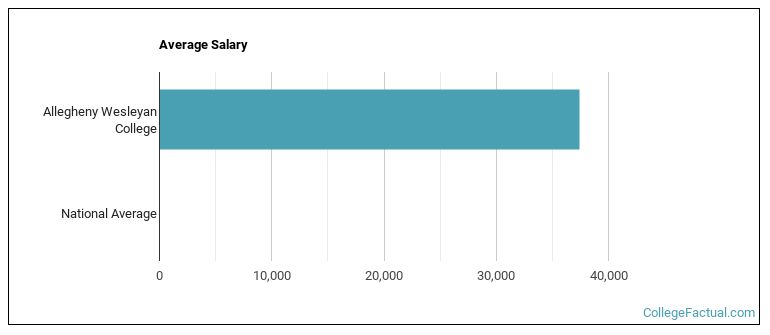 by our College Data Analytics Team
by our College Data Analytics TeamExplore the best ranked schools for the programs you are most interested in.
Allegheny Wesleyan was not ranked in College Factual's Best Overall Colleges report this year. This may be because not enough data was available.
Allegheny Wesleyan College has an open admissions policy, so you should not have much trouble being accepted by the school. Still, it is important to fill out the application completely and submit any requested materials, which may include proof that you have a high school diploma or the equivalent.
At Allegheny Wesleyan, the student to faculty ratio is an excellent 7 to 1. That's much better than the national average of 15 to 1. This indicates that many classes will probably be small, and students will have ample opportunites to work closely with their professors and classmates.
Another measure that is often used to estimate how much access students will have to their professors is how many faculty members are full-time. The idea here is that part-time faculty tend to spend less time on campus, so they may not be as available to students as full-timers.
The full-time faculty percentage at Allegheny Wesleyan College is 20%. This is lower than the national average of 47%.
Allegheny Wesleyan College has a freshmen retention rate of 76%. That's a good sign that full-time students like the school and their professors enough to want to stick around for another year. It's also a sign that the admissions team did a good job in choosing applicants who were a good fit for the school.
The on-time graduation rate is the percent of first-time, full time students who obtain their bachelor's degree in four years or less. This rate is 4% for first-time, full-time students at Allegheny Wesleyan, which is lower than the national rate of 33.3%.
Find out more about the retention and graduation rates at Allegheny Wesleyan College.
During the 2017-2018 academic year, there were 67 undergraduates at Allegheny Wesleyan with 48 being full-time and 19 being part-time.
The net price is calculated by adding tuition, room, board and other costs and subtracting financial aid.Note that the net price is typically less than the published for a school. For more information on the sticker price of Allegheny Wesleyan, see our tuition and fees and room and board pages.
It's not uncommon for college students to take out loans to pay for school. In fact, almost 66% of students nationwide depend at least partially on loans. At Allegheny Wesleyan, approximately 90% of students took out student loans averaging $3,500 a year. That adds up to $14,000 over four years for those students.
Get more details about paying for Allegheny Wesleyan College.

See which majors at Allegheny Wesleyan College make the most money.
Get more details about the location of Allegheny Wesleyan College.

Contact details for Allegheny Wesleyan are given below.
| Contact Details | |
|---|---|
| Address: | 2161 Woodsdale Rd, Salem, OH 44460-9598 |
| Phone: | 330-337-6403 |
| Website: | awc.edu/ |
| Most Popular Majors | Bachelor’s Degrees | Average Salary of Graduates |
|---|---|---|
| Missionary Studies | 5 | NA |
| Sacred Music | 4 | NA |
| Teacher Education Grade Specific | 3 | NA |
| Liberal Arts General Studies | 3 | NA |
| Theological & Ministerial Studies | 3 | NA |
| Religious Education | 0 | NA |
Online learning is becoming popular at even the oldest colleges and universities in the United States. Not only are online classes great for returning adults with busy schedules, they are also frequented by a growing number of traditional students.
In 2022-2023, 13 students took at least one online class at Allegheny Wesleyan College. This is an increase from the 2 students who took online classes the previous year.
| Year | Took at Least One Online Class | Took All Classes Online |
|---|---|---|
| 2022-2023 | 13 | 13 |
| 2021-2022 | 2 | 1 |
| 2020-2021 | 2 | 2 |
| 2018-2019 | 0 | 0 |
Learn more about online learning at Allegheny Wesleyan College.
Footnotes
*The racial-ethnic minorities count is calculated by taking the total number of students and subtracting white students, international students, and students whose race/ethnicity was unknown. This number is then divided by the total number of students at the school to obtain the racial-ethnic minorities percentage.
References
More about our data sources and methodologies.